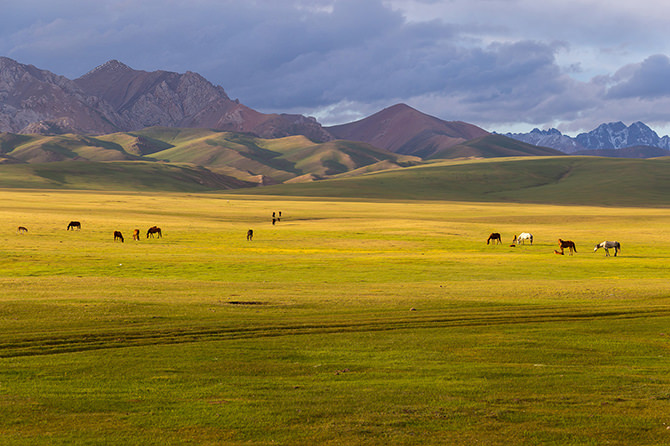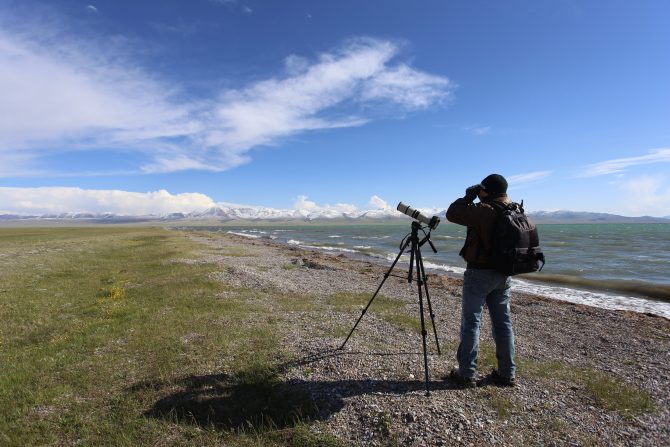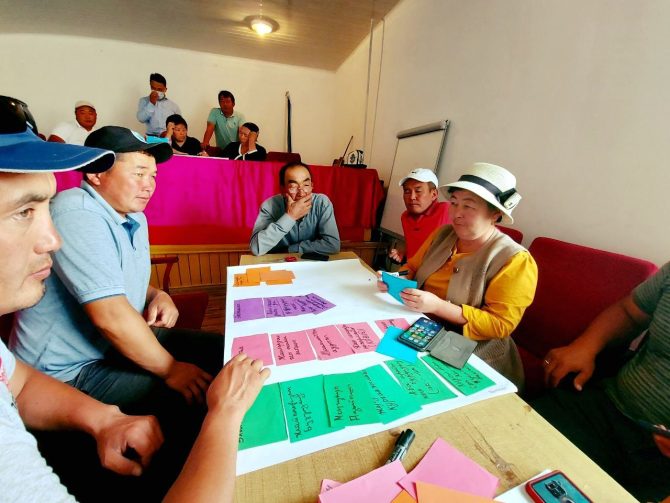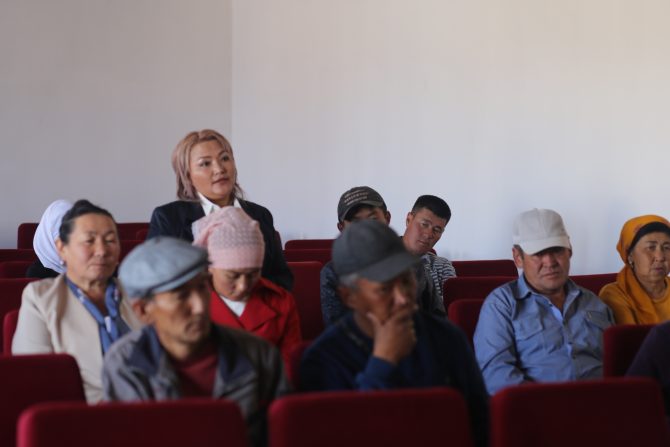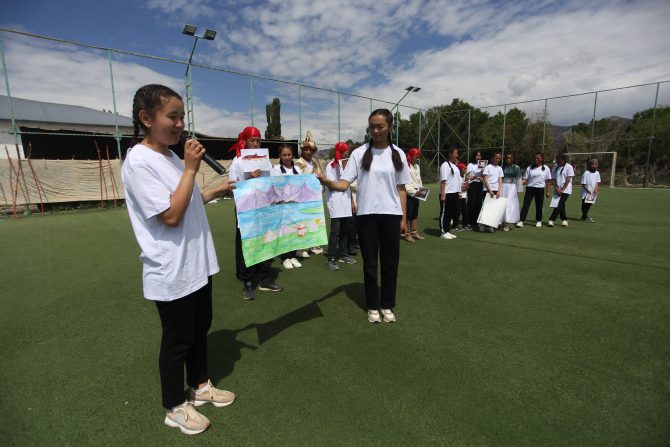2021 KYRGYZ
Safeguarding wetland ecosystems and pastoral communities in the Kyrgyz Mountains
“Institute for Sustainable Development Strategy” Public Fund (ISDS)
Community / field-based implementation
Landscape
Overview
Son Kul Lake has unique ecologically, socio-culturally and naturally distinctive SEPLS. It is on the International List of Wetlands under the Ramsar Convention. Lake Son Kul is of great importance as a nesting and summering site for waterfowl. The status of biodiversity is highly dependent on the sustainability of the whole lake's mountain ecosystem, which plays a vital role in shaping/protecting soils, controlling water flows and erosion in the catchment area of river basins, cleaning up surface pollution, and preventing floods, mudflows, and landslides. Son Kul wetlands are associated with the religious beliefs and spiritual values of Kyrgyz people. They are a source of aesthetic and artistic inspiration, contain valuable archaeological evidence of the past, provide a refuge for wildlife, and form the basis of local social traditions and economic and cultural characteristics. Moreover, Son-Kul is surrounded by mountain ranges that rise more than 4,000 meters above sea level and have traditionally been used as summer pasture for grazing livestock, which is very important for the community. The Naryn region, where Son Kul Lake is located, has historically been one of the poorest regions, with more than 30% of the local population living in poverty and directly dependent on natural resources. Therefore, people have been at risk of environmental degradation, climate change, and natural or man-made disasters.
The overall aim of the project is to strengthen local communities in Cholpon rural municipality to sustainably manage, protect and preserve the wetland ecosystems of Son Kul Lake, which is an Important Bird Area (IBA).
Main objectives:
1. Build capacity and raise awareness of local communities on effective use, management and conservation of wetland mountain ecosystems in SEPLS.
2. Strengthen resilience and livelihoods of local communities.
To achieve these objectives, we conducted the following activities:.
- Mapping and monitoring of wetlands and biodiversity (wetlands/waterfowl, flora/SEPLS (Son-Kul wetlands zone) by the local community members in close cooperation with scientists of the National Academy of Sciences of the Kyrgyz Republic (NAS)
- Community Biodiversity Protection Group (CBPG) consisting of 16 eco-activists/community leaders was formed and trained to monitor and preserve SEPLS to build the capacity of representatives of Cholpon rural municipality, heads of 8 villages, community leaders, and deputies of the local council by providing training on the following themes: “Biodiversity of Son Kul Lake: main problems and ways of solving them”; “Management of SEPLS of Son Kul Lake.”
- Training for CBPG members on participatory approaches, needs assessment and action planning for CBPG members and development of Community Action Plan (CAP) by community representatives
- A broad educational and informational campaign at the local and district levels on the ecological and economic importance of natural resources/wetlands including: - a dialogue session-seminar with the community residents/village leaders to discuss issues related to threats of natural resources in the Son-Kul region and to determine measures and solutions for their protection; - a forum-theatre for students, eco-activists, and village leaders; and - published and distributed informational materials about the importance of preserving Lake Son-Kul.
Key achievements
- More than 2,160 local residents of Cholpon municipality learned about the importance of SEPLS restoration in Son Kul.
- CBPG (16 people) were trained on participatory approaches and assessment; 1 CAP was produced.
- Funds allocated from local budget for pilot zone restoration in 2023.
- 24 households improved their skills in income-generating activities, and 3 projects were supported (sewing workshop, beekeeping, horticulture) to reduce pressure on pastures.
- 42 maps of flora and birds were developed, published and distributed among 11 local schools in Kochkor district, local self-governments and Karatal Zhapyryk state reserve; 2 video clips (https://www.youtube.com/watch?v=TTUngxrJBB0&t=3s; https://www.youtube.com/watch?v=r-HHGQosx9I) and 1 documentary film “What will happen to Son-Kul in 50 years?” were produced in Kyrgyz language (https://www.youtube.com/watch?v=hl25KrOC3So&t=8s).
Lessons
It is required to transfer knowledge and best practice on community engagement to the conservation and restoration of ecosystems, wetlands and grasslands among all communities that graze their livestock in the Son Kul area.
Project location
Organisation
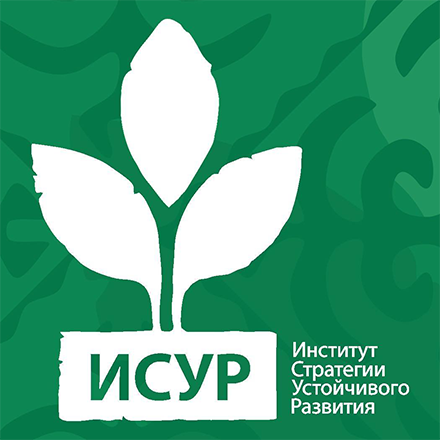
“Institute for Sustainable Development Strategy” Public Fund (ISDS)
- Sector
- Non-governmental / civil society
- Country
- Kyrgyz
- Website/SNS
- http://www.isds.kg/index.php/en/
Related products
Documentary film: “What will happen to Son-Kul in 50 years?” (Kyrgyz Language))
- Publisher
- “Institute for Sustainable Development Strategy” Public Fund (ISDS)
Video clip: Фестиваль “Сохраним Сон-Куль. Птицы Сон-Куля” (Kyrgyz Language)
- Publisher
- “Institute for Sustainable Development Strategy” Public Fund (ISDS)
Video clip: Эко акция “Чистый Сон-Куль” (Kyrgyz Language)
- Publisher
- “Institute for Sustainable Development Strategy” Public Fund (ISDS)
Maps of Son-Kul flora and fauna/Birds Son-Kul
- Publisher
- “Institute for Sustainable Development Strategy” Public Fund (ISDS)
Relevant projects
Projects of the same year
Aichi Biodiversity Targets
Aichi Biodiversity Targets
-
Awareness increased
-
Biodiversity values integrated
-
Habitat loss halved or reduced
-
Sustainable agriculture, aquaculture and forestry
-
Protected areas increased and improved
-
Traditional knowledge respected and integrated
Sustainable Development Goals
Sustainable Development Goals
-
No poverty
-
Good health and well-being
-
Quality education
-
Gender equality
-
Reduced inequalities
-
Sustainable cities and communities
-
Climate action
-
Partnerships for the goals
